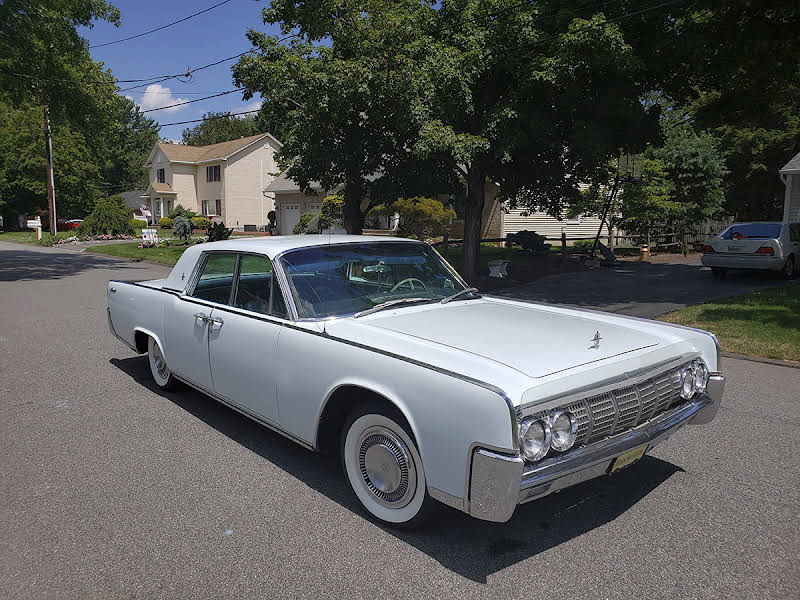
The 2020 Ford Mustang V6 continues the tradition of the iconic pony car, but with a new level of performance and agility. There are a variety of options to suit every budget, including performance levels Level 2-5. Read on to learn more about the new car. You may be surprised at the price! The Ford Mustang V6 2020 pony car is lighter than any other Ford vehicle, weighing in at just $46,000.
Performance Pack Level 2.
The Ford Mustang is an iconic sports car. However, its performance has changed significantly over the years. Ford announced the resurgence of the Mustang Mach 1 and axed the Shelby GT350 and GT350R. The Performance Pack Level 2 is now available and there's a new order form. BlueOvalForums first reported about the new ordering guide. Here is a summary of the GT changes.
Performance Pack Level 3
The Ford Mustang performance pack level two is available on the 2019 and 2020 V6 models. The new package includes 19 inch wheels, a larger radiator and heavy-duty frontsprings. A Torsen Limited-Slip Differential is also included. Retuned steering and ABS are also available. Any Mustang can have the package added. The 2019 Mustang GT is available with a performance pack level two. It is priced between $35,000 to $40,000, and features 700 horsepower.
Level 4 Performance Pack
Ford Mustang is now offering more performance. Performance Pack level 4 increases the torque in the front wheels to give the car more control and a better feel on roads. The car's handling is better with a flatter turn-in and more responsive. Despite its increased weight, the car still maintains a civil ride quality. It also comes with optional Recaro sport seats.

Performance Pack Level 5.
Ford Mustang was given a major refresh with the Performance Package 2. This package, which was already available on the 2015 model of Ford Mustang, includes many track-focused features. Ford has however confirmed that this package won't be available on the 2020 Mustang V6. Ford has not revealed any further details about the status of Ford's package, however it is believed that it will disappear after 2021.
Performance Level 6
The 2020 Mustang V6's Performance Pack Level 6 includes a wide range of features. This package includes new tires, a stronger engine, and larger brakes. It also features a redesigned front splitter and tubular rear sway bars measuring 21.7 millimeters. However, all of these changes come with an additional cost. For more information about the performance package, please read below.
Performance Pack 7
Ford's Mustang V6 is the strongest engine Ford has ever installed in a pony-car. The Mustang V6's V6 engine is a powerful 345 horsepower with a spirited 310 pound-feet. A Performance Pack allows you to add upgrades to the base Mustang and allow you to modify the car to your specifications. Performance packs can be added to the cost of the car by adding a variety optional upgrades. These may add up as high as $5,000.
Performance Pack Level 8
The Performance Pack Level 8 for 2020 Mustang V6 adds some serious upgrades to the vehicle. The package includes new front and rear springs, a rear stabilizer bar, improved brakes, and larger wheels. It is also available with V6, EcoBoost, or GT trim. It can add nearly $1,500 to the price tag. The vehicle also includes new magnetic ride dampers and larger front rotors. It also has revised chassis tuning.
Performance Pack 9
Ford Mustang V6 engine is powerful. This car can reach 60 mph in just 3.5 seconds with the High Performance Package. The Performance Pack Level 9 upgrade adds 19x9 inch machine-faced aluminum wheels with high-performance summer tires 255/40R, a blacked out grille and unique 2.3-liter High Performance Package badges. A blacked-out Mustang GT hood is available with a tribar pony badge, metallic gray stripes and a tri-bar pony emblem. The engine comes with a tuned exhaust note as well as a quad-tip active exhaust system.

Performance Pack Level 10.
The 2020 Mustang V6 offers a few more upgrades than its predecessor, including a performance pack. The $1,995 Handling package adds an upgraded suspension and aerodynamic parts. The car gets more aggressive pads for its brakes, and wider wheels with more sticky tires offer a more comfortable ride. Overall, the new V6 is faster, sexier, and more fun to drive.
Performance Pack Level 11
Ford Mustang is now offering a Performance Pack Level two. This package is almost identical to the GM Camaro 1LE. The new Performance Pack Level two features retuned steering and revised aero. It also has a lower ride height. It's a welcomed addition the Mustang range. These are the main differences. These will be explained in a minute. Ford has not yet provided pricing information for the Performance Pack Level 2.
FAQ
Is it hard to be a mechanic apprentice?
It is not easy but it can be done quickly. There are many opportunities for advancement.
You must be patient and persistent. You should also be able to repair cars, trucks, and motorbikes.
Customers and loved ones can place a lot of pressure on you. But you should never feel pressured into making decisions you aren't comfortable with.
It could be a great job choice if you love fixing cars. You can make a decent living and build your business.
You might choose to take a different route. If this is the case, you might want to become a technician.
This could involve using your technical knowledge to support other employees. You could help technicians troubleshoot problems or teach them new techniques.
Another option is to become an advisor in service. Here, you'll provide advice and assistance to customers when they bring their cars to a garage.
Your decision will be based on what your priorities are. There are many options, so you can choose the one that suits you best.
What is the average time it takes to become a mechanic?
Expert mechanics take years of practice and extensive experience. You can learn the most effective way to fix cars by learning from a professional mechanic.
You will be required to spend time at a car garage learning as much as you can about cars. It is important to get familiar with the mechanics of cars and engineering.
You will also need to go to auto school.
The most important thing is to start early. Don't wait until you're older to begin studying automotive technology. If you want to qualify as a mechanic, get started now!
What are the requirements for an automobile technician?
You need to have high school diploma or GED and good grades in English as well as maths. You also need to be able to read and write well. You will need to pass a written test and then go through a series of practical exams before being allowed to start work.
What qualifications are necessary to become a truck driver mechanic?
This job requires you to be a skilled mechanic, although you do not need any formal training. You are a valuable asset as you can quickly diagnose and solve problems efficiently.
Your knowledge of diesel technology will allow you to identify the parts that are required to fix our vehicles.
Statistics
- According to the BLS, total auto technician employment is expected to exceed 705,000 by 2030. (uti.edu)
- The U.S. Bureau of Labor Statistics (BLS) reports that the job outlook for automotive service technicians and mechanics is expected to decline by 4% from 2019 to 2029. (indeed.com)
- According to the BLS, the median annual salary for automotive service technicians and mechanics in the United States was $44,050 in May 2020. (uti.edu)
External Links
How To
How to properly diagnose your vehicle for repair
To determine if your car needs repairs, you should first look at the symptoms that your car presents. You can then follow these steps for a proper diagnosis of your vehicle.
-
Check engine lights. Make sure to check all dashboard indicators like the engine light indicator (oil pressure gauge), the battery indicator (battery light indicator), and the RPM indicator (rpm gauge). It could indicate that your vehicle is having problems.
-
Take a look at the treads. Tires with worn treads could cause problems when handling or braking. You should also inspect the wheel treads. You should ensure that they are clean and smooth. The best way to do this is to remove the wheels and take them off. To check the condition of your treads, use a flashlight.
-
Check the level of brake fluid. Keep track of the brake fluid level in your vehicle. This will ensure that your brakes run smoothly. If your brake fluid level is low they might not work properly when you apply pressure.
-
Make sure to test the suspension system. A suspension system is designed to absorb vibrations and shocks. It gives you better control and allows for smoother accelerations and decelerations. If your vehicle has a suspension problem, it might feel wobbly or shake uncontrollably. To determine whether your vehicle may have a suspension issue, you can try to put weight on the rear or front axle and watch the movement.
-
Examine the steering column. Steering columns connect the steering wheels to other parts of the vehicle. Sometimes, steering columns are damaged by accidents. Replace it if your steering column feels loose or unsteady.
-
Observe the exhaust pipes. The exhaust pipes are responsible for moving gases from the combustion chamber into the atmosphere. Your cabin will be effected if your exhaust pipe cracks or leaks. If your tailpipe bends, it is important to fix it immediately.
-
Look under your hood. Take a look underneath the hood to find any strange or unusual items. There could be fluid leaking from your engine. A professional technician should be contacted if your engine compartment emits an unusual smell.
-
Make sure to check the air filter. The outside environment can collect dust and other debris in your vehicle's air filters. Your vehicle will run less well if it has a dirty filter. Replace your air filter regularly.
-
Check the fan belt. Your vehicle's fanbel is what connects the engine and the transmission. If the fanbel breaks, your engine won't turn. It's easy to replace the belt. You only need a screwdriver or pliers to replace your belt.
-
You should inspect the radiator and hoses. The radiator-hose carries water to the engine. It can cause hot liquid to leak onto the engine if it is damaged or cracked. To repair the leaky hose, all you need is a pair if needle-nosepliers.
-
The windshield wipers should be checked. Windshield wipers work by using electricity to remove rain and snow. If they stop functioning, they can leave streaks in your window glass. Change the washer fluid to fix the problem.
-
The battery cables should be checked. Batteries provide power to electrical systems inside your car. Always disconnect the negative wire before you replace batteries. Failure to do so can damage your alternator.
-
You should check the headlights. Headlights illuminate the road ahead of you. Bad visibility can be caused by headlights that don't work correctly. Check the bulbs to see if they've burned out.
-
Make sure you have your lights on. When you approach them at night, the lights warn other drivers. You could be distracted and cause an accident if one does not work.
-
Check the brakes. Brakes will reduce the speed of your car in case of an accident. If your brakes aren't working properly, you may lose control and crash into other cars.
-
Change the oil. The oilkeeps your engine lubricated. It protects metal parts and prevents them from wearing too quickly. It is recommended to change the oil once a month.